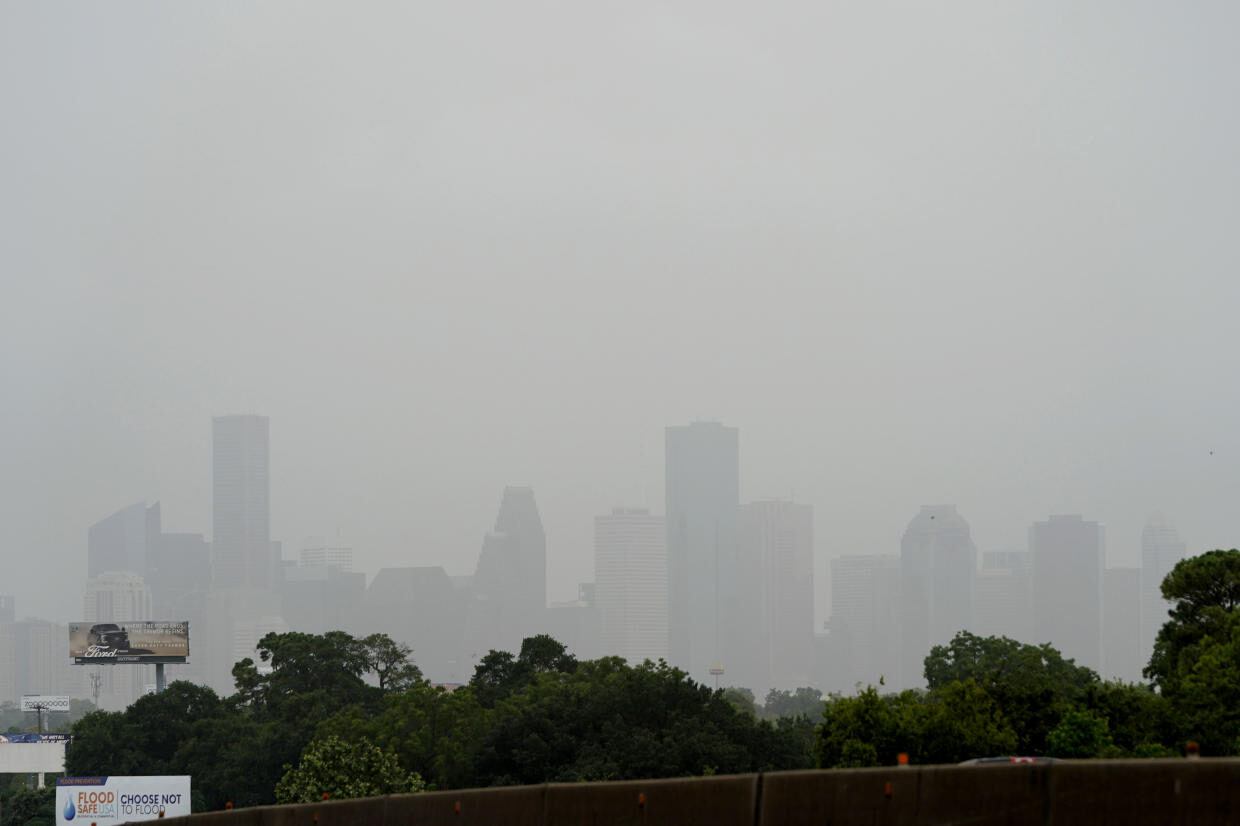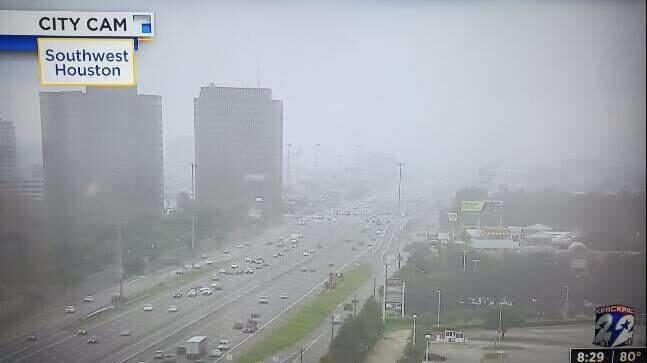For most people, the dust will merely be a nuisance, but for many who have breathing issues the extra particulates in the atmosphere can cause complications. The timing couldn't be much worse, considering that a recent Harvard study shows that long-term exposure to fine particles of pollution in the air, much like dust, may be linked to higher rates of hospitalization and death due to COVID-19.
Currently the dust is thickest from Texas to Florida.
If you are having trouble depicting the #dust among the clouds, I drew a approx outline around it. The dust is the milky hazy gray among the brighter white clouds. #DustStorm #dustcloud pic.twitter.com/CkKmW5fjNu
— Jeff Berardelli (@WeatherProf) June 26, 2020
The dust is responsible for the dense haze shrouding Houston's skyline in the photo below.

In some places, like the Southeast, enough dust will settle that odds are people there will be able to see a thin layer of dust on their cars.
Dust watch day 2. Some low clouds moving through then the gray haze of the dust up top. Just too dense for nice sunrise colors. Air quality alert today. #Nola #dust #SaharanDust pic.twitter.com/XnHQIX9qrh
— Hank Allen (@HankAllenWX) June 26, 2020
SAHARAN DUST! ☀️🐪
— Matt Devitt (@MattDevittWINK) June 26, 2020
A pilot and @WINKNews viewer sent me this earlier today above Florida at 15,000 ft. Wow! @StormHour @spann @JimCantore pic.twitter.com/wNRoZLLmQm
Brown Haze can be seen in the Sky over Corpus Christi this morning indicating the Saharan Dust has arrived. #stxwx pic.twitter.com/aigikxVeQJ
— NWS Corpus Christi (@NWSCorpus) June 26, 2020
As a side note...will be interesting to see if this round of rain deposits any of the Saharan dust on our cars, other surfaces. https://t.co/gHdx3hI63m
— Steve Caparotta, Ph.D. (@SteveWAFB) June 25, 2020
The dust plume is forecast to break into two chunks due to a split in steering flow in the mid levels of the atmosphere, which will act as a guide.
One part of the dust cloud will be pulled northward from Texas through the Plains States and Midwest this weekend, and even to the Canadian border on Monday morning. The dust will diffuse and thin out dramatically by the time it reaches the nation's middle, but cities like Kansas City, Minneapolis and Chicago will see a hazier than normal sky. The dust in the atmosphere will also make for some especially vivid sunrises and sunsets.
The latest Saharan Dust Layer forecast keeps most of the dust in the SE 1/4 of the nation... but some of the thinner haze will float north through the Plain states, Midwest, Ohio and TN Valley - even areas like Missouri, Iowa, Chicago will see some dust by Sunday - albeit thin. pic.twitter.com/GWwcyUIlYX
— Jeff Berardelli (@WeatherProf) June 26, 2020
Now, dust has both negative and positive impacts.
On the positive side, for millions of years dust has been transported by the east-to-west trade winds from Africa across the Caribbean to Florida, supplying much of the soil, and nutrients in the soil, for growth of vegetation. Scientists believe that the nutrient load in the environment around Florida and the Bahamas is otherwise so poor that without the African dust, the coral reefs would have had a hard time growing and flourishing. Dust plumes also supply much of the nutrients to sustain life in the Amazon rainforest.
(Read more here)




Reader Comments
to our Newsletter